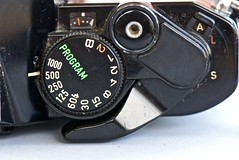Difference between revisions of "Canon AE-1 Program"
m |
|||
| Line 3: | Line 3: | ||
|image = http://farm2.static.flickr.com/1329/5128276326_e87498f519_m.jpg | |image = http://farm2.static.flickr.com/1329/5128276326_e87498f519_m.jpg | ||
|image_source = http://www.flickr.com/photos/heritagefutures/5128276326/in/pool-camerawiki | |image_source = http://www.flickr.com/photos/heritagefutures/5128276326/in/pool-camerawiki | ||
| − | |image_text= image by Dirk Spennemann {{With permission}} | + | |image_text= image by Dirk HR Spennemann {{With permission}} |
|manu = [[Canon]] | |manu = [[Canon]] | ||
|speedRange= 12-3200 | |speedRange= 12-3200 | ||
| Line 35: | Line 35: | ||
|image_align= left | |image_align= left | ||
|image_text= Canon AE-1 Program | |image_text= Canon AE-1 Program | ||
| − | |image_by= Dirk Spennemann | + | |image_by= Dirk HR Spennemann |
|image_rights= with permission | |image_rights= with permission | ||
}} | }} | ||
Revision as of 04:54, 28 February 2011
| Canon AE-1 Program |
|---|
|
Manufacturer: Canon
Film type: 35mm
|

|
| Canon AE-1 Program image by Dirk HR Spennemann (Image rights) |
The Canon AE-1 was an extremely popular camera, but many users wanted the program auto exposure mode found on the A-1. Canon added program AE mode, upgraded the support for a new power winder (A2), and marketed the AE-1 Program, which became even more popular than the AE-1.
Market Value
The AE-1 and AE-1 Program were both enormous financial successes for Canon, in part because they pioneered cost-cutting measures that competitors had difficulty matching. The AE-1 series of cameras employed plastics and metalized plastics pervasively in its assemblies, whereas its big brother the A-1 was built far more robustly with machined gears. As a result, the AE-1 often suffers from shutter squeal, or worse, catastrophic failure that is not economically repairable. Despite this, because of its relative scarcity and historical popularity, the AE-1 Program retains value on the used market according to KEH and other various dealer pricing data.
Links
- Modern Classics Review
- Canon Camera Museum | Camera Hall
- Lionel's Canon AE-1 Program overview at 35mm-compact.com
- AE-1 Program and AE-1 Program chrome and French notice (pdf) at www.collection-appareils.fr
- Canon AE-1 Program Camera Manual : Photo-Manuals.com by Ben Squire
- AE-1 Program Price Data at Camera Repair dot Com's price data
